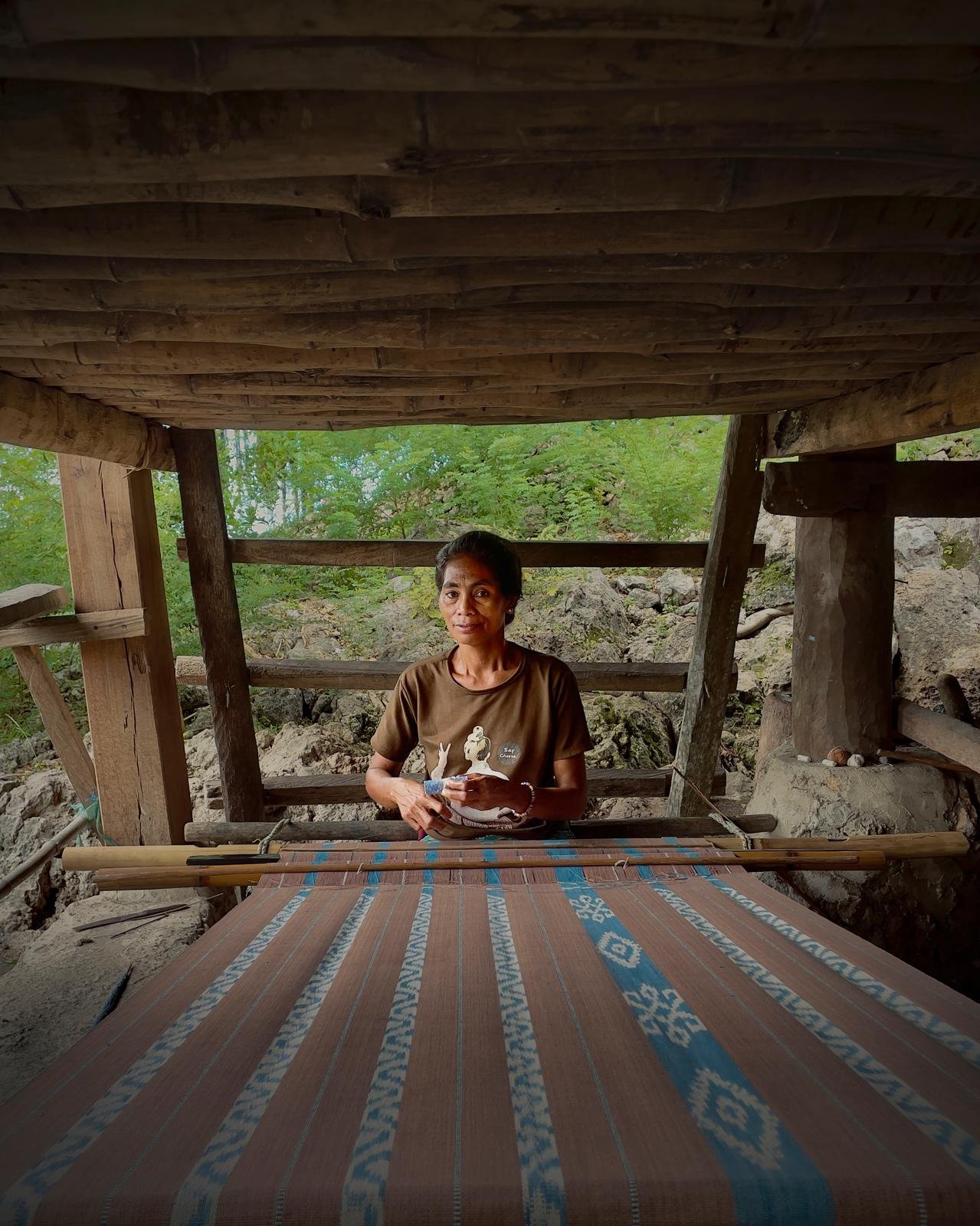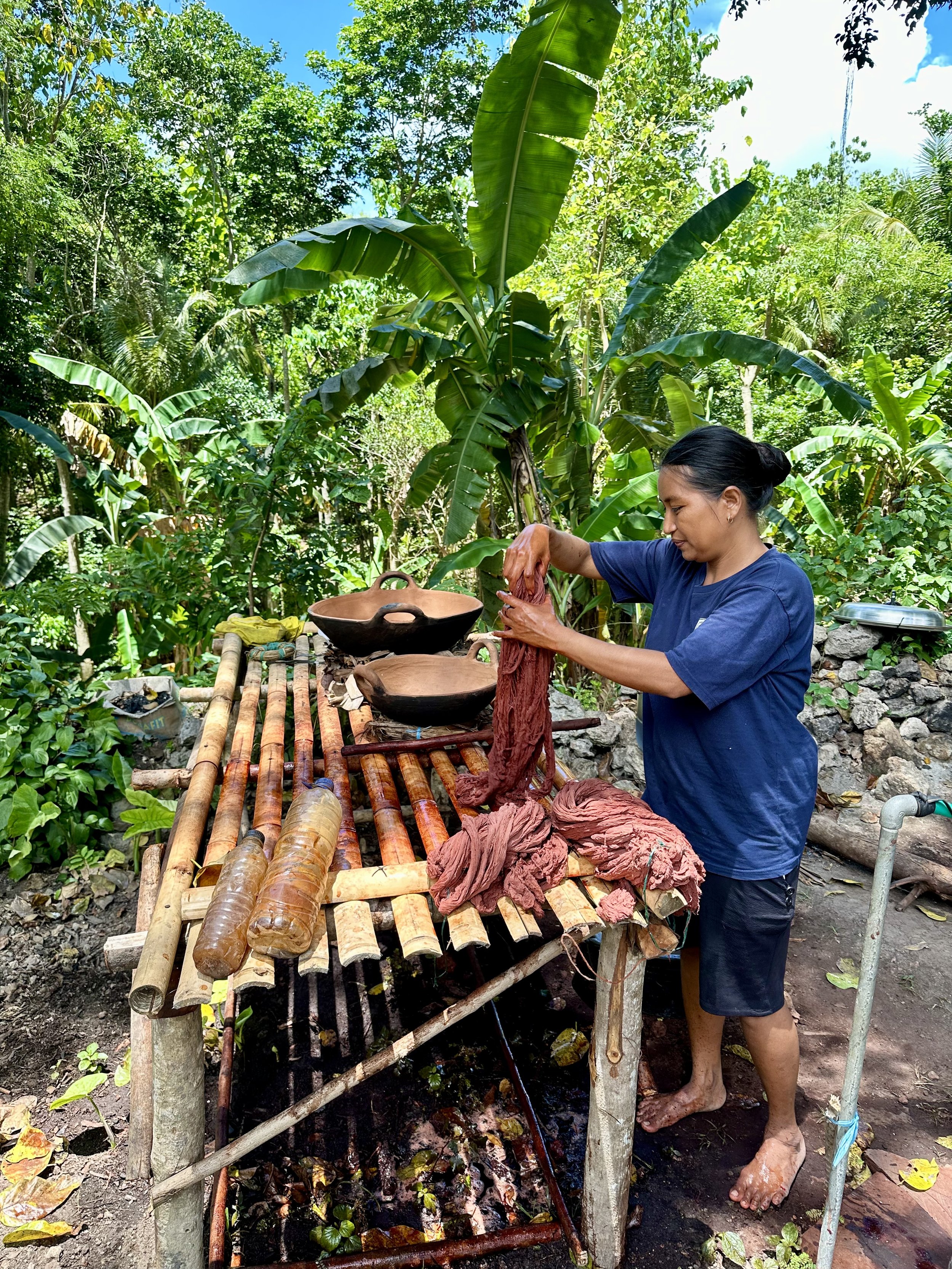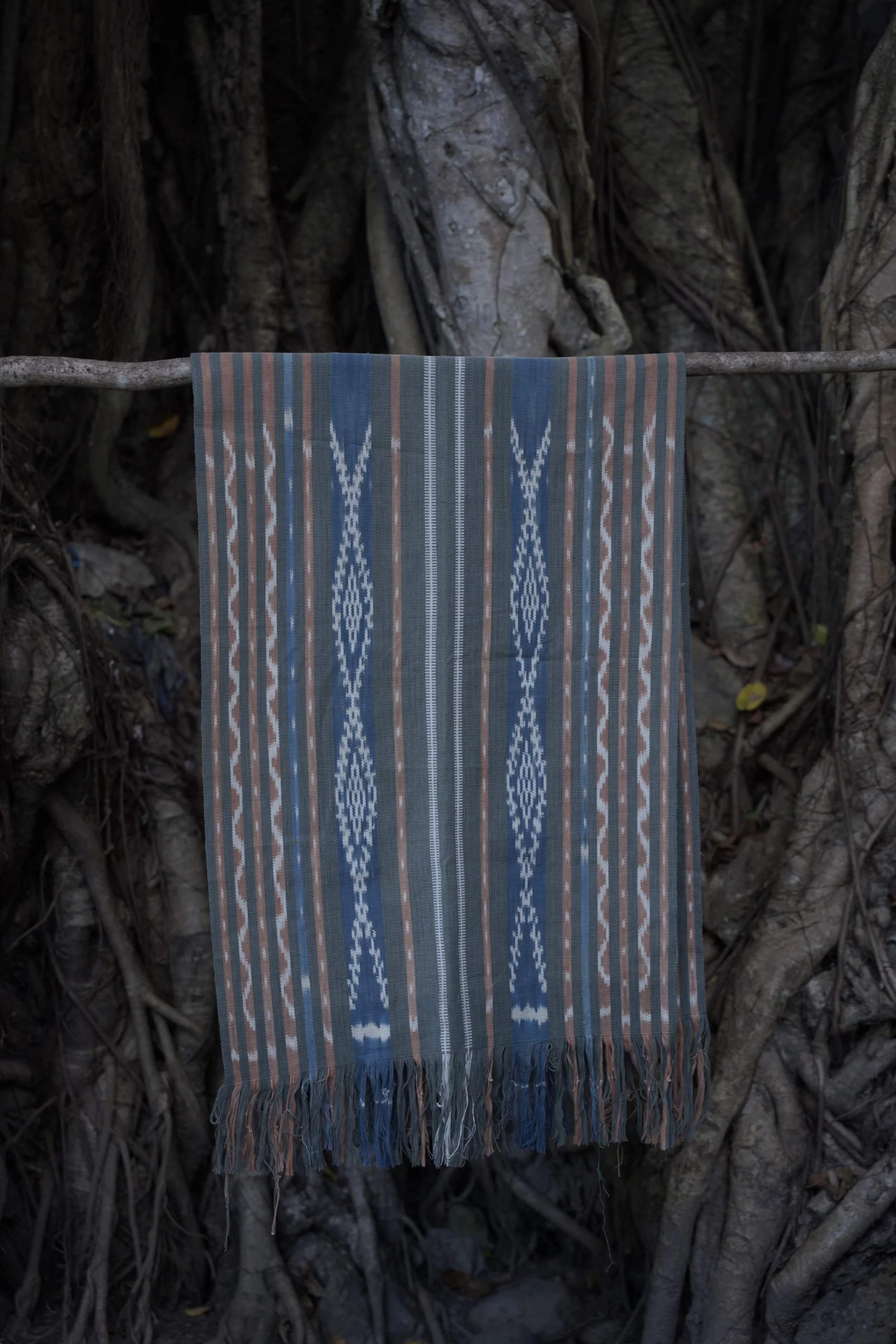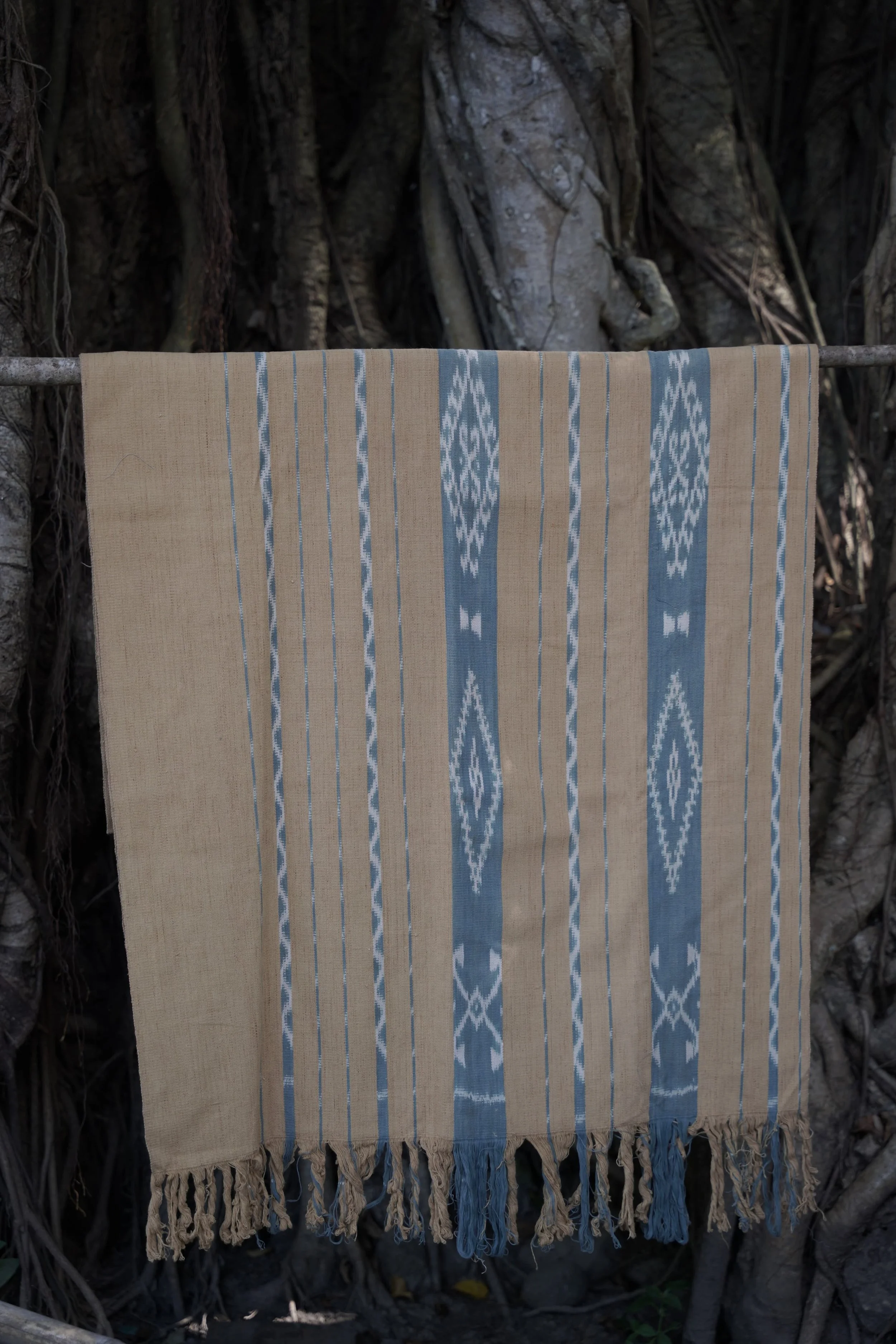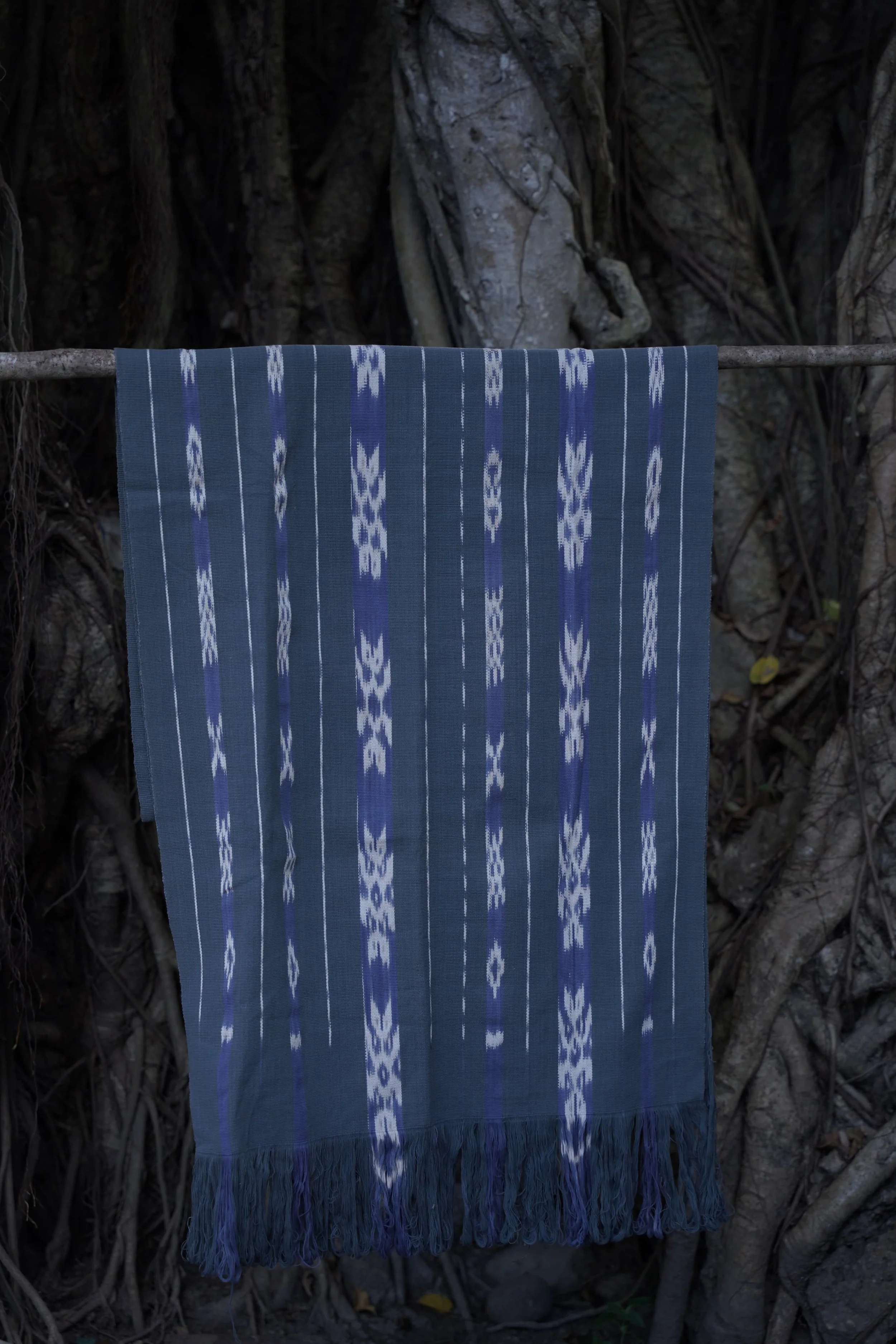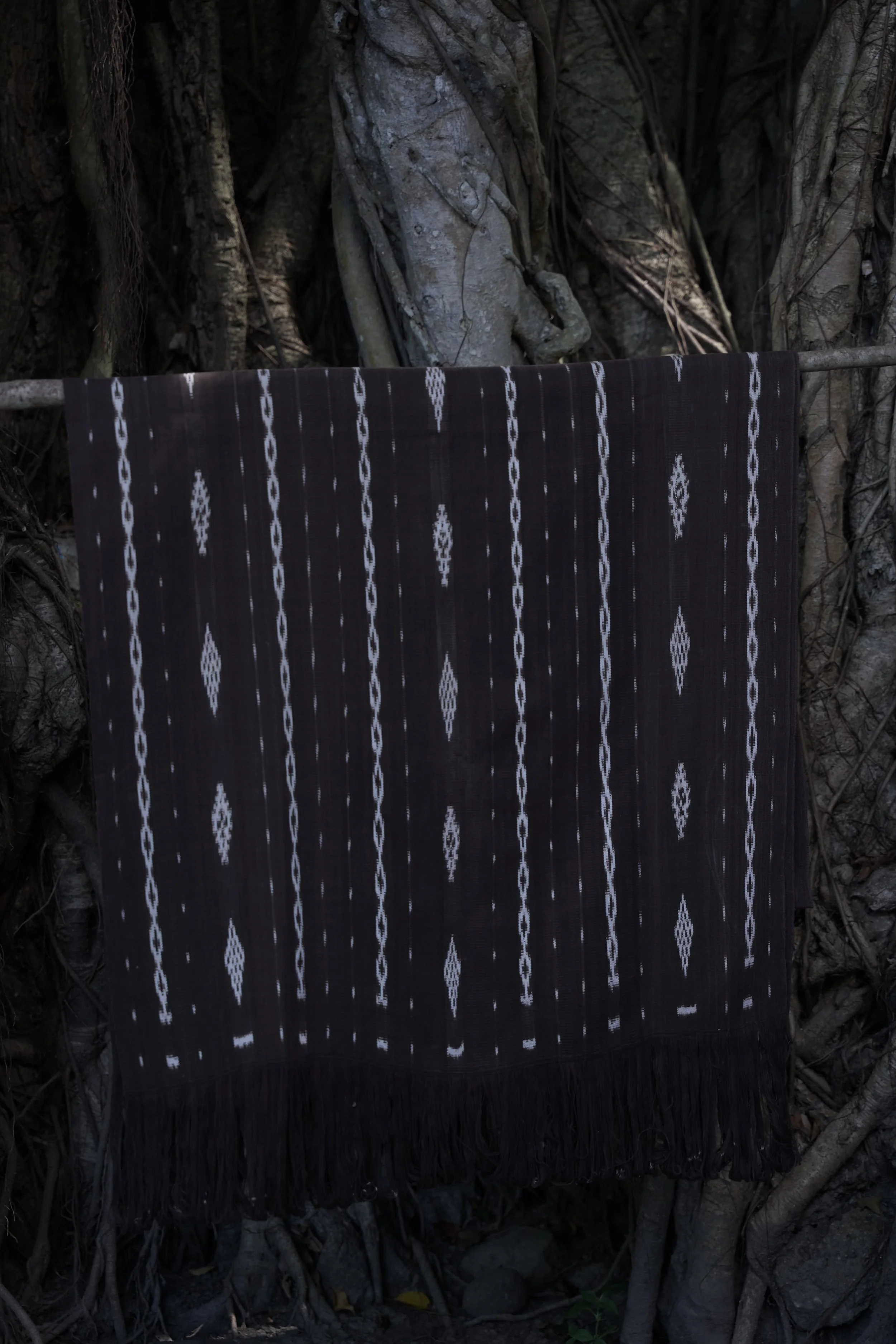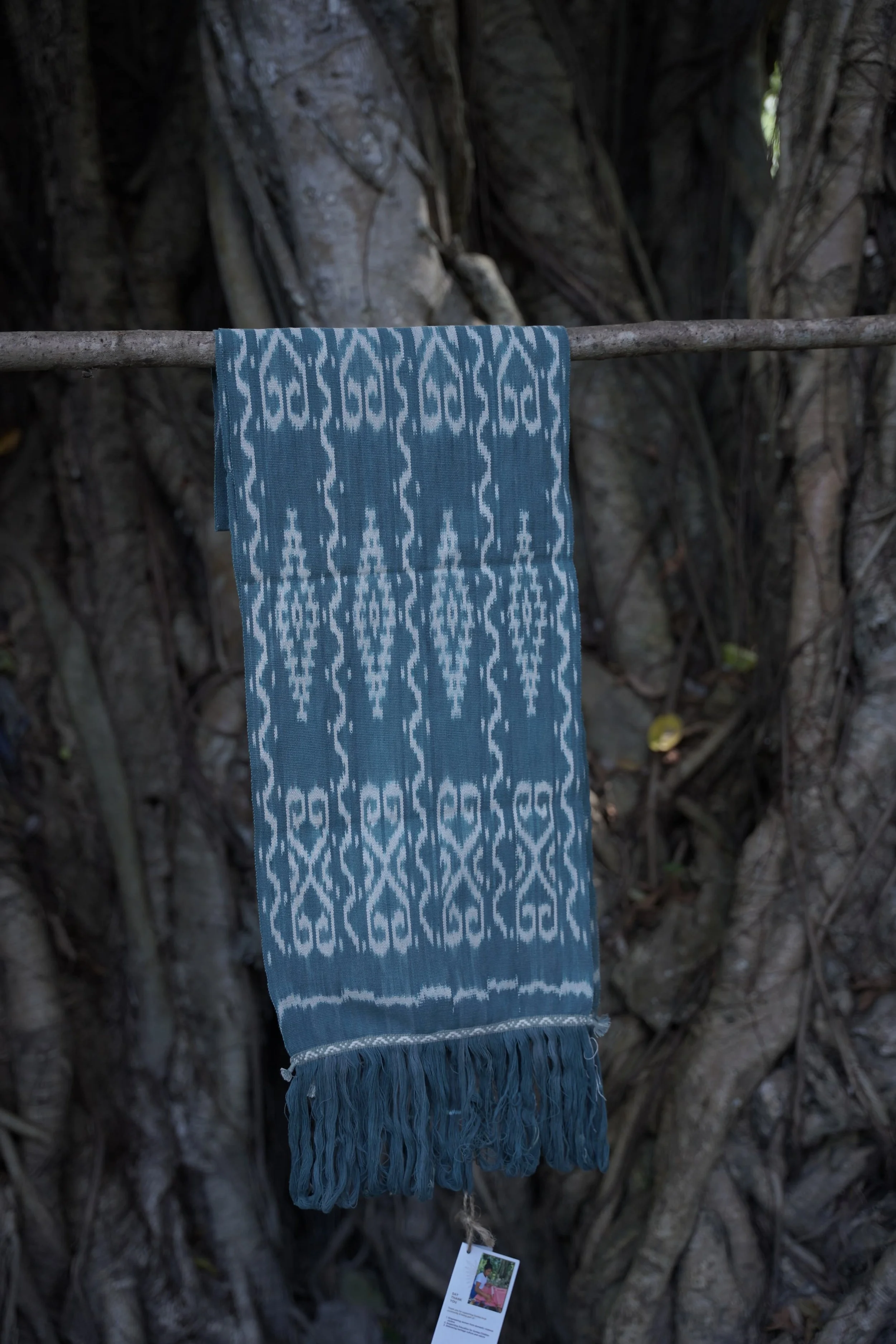Ikat Weaving
Unravelling the History of Ikat Weaving in Sumba
Sumbanese ikat has a rich and vibrant history, deeply rooted in the culture and traditions of the island of Sumba in eastern Indonesia. The art of ikat, which means "to tie" or "to bind" in the Indonesian language, involves a meticulous process of dyeing threads before weaving them into intricate patterns.
Historically, Sumbanese ikat has been a central aspect of social, cultural and economic life on the island for centuries. According to one belief, Sumba is saved from drowning in the sea by a bundle of warp threads hanging in the sky. Therefore, it is not possible to weave in the centre of Sumba as the warp threads would eventually break due to the rubbing up and down of the needle, but ikat must be woven in the east and west to sustain life on the island.
Over time, Sumbanese ikat evolved to reflect the dynamic cultural landscape of the island, influenced by interactions with neighbouring regions and distant trading partners. For centuries Sumba hosted traders from all over Nusa Tenggara as well as Chinese, Javanese, Buginese and Arab traders on the north coast and later the Portuguese, English and Dutch who traded sandalwood and sturdy little 'sandalwood horses' for ceramics, beads, weapons, gold and textiles.
Each ikat motif and design has multiple layers of meaning, often depicting elements of nature, mythical creatures, ancestral spirits and cosmological beliefs unique to Sumbanese culture. Textiles are an essential part of ritual exchanges on Sumba: as female goods, they are exchanged with metal objects (gold jewellery, knives). Special textiles are carried by the bride.
“Weaving ikat requires the collaboration of skilled artisans, from the harvesting of natural dyes to the intricate weaving process. Traditionally, this knowledge is passed down from mother to daughter.”
Karaja Weaving
Karaja is a type of weaving found in Lamboya, West Sumba. The weaving is usually monochrome with vertical stripes of patterns that can vary in width.
A tapestry can take up to three months to make. If the weaver makes her own yarn from home-grown cotton, the process, which is done entirely by hand, takes a whole year.
Natural Dyeing
At Karaja Sumba, we dye all our yarns using traditional natural dyeing techniques. The ingredients, which are a variety of roots, spices and plants, are collected in and around the weavers’ villages. As a result, certain colours are seasonal and all tapestries have a unique shade.
The knowledge of natural dyeing has been revitalised since Karaja was founded, as weavers are increasingly using chemical dyes.
As the ingredients used to make the dyes are also used in traditional medicine, wearing an ikat has a healing effect and carries with it a natural aroma.
Ikat Catalogue
Discover our beautiful handmade ikats online
All our Ikat tapestries are unique, telling the weaver’ story. This catalogue is to give you a first idea of our available range.
To protect the integrity of our weavers’ work, we do not sell online. We invite you to visit our showroom in Sumba and choose your favourite piece.
Our prices are honest and reflect the months of work our artisans have spent weaving. Rightfully, this allows them to earn a decent living and support their families.
The ikats are available in different sizes: small (100 cm x 20 - 40 cm), medium (200 cm x 45 cm), large (300 cm x 45 - 50 cm) and premium (300 - 400 cm x 80 - 100 cm).




